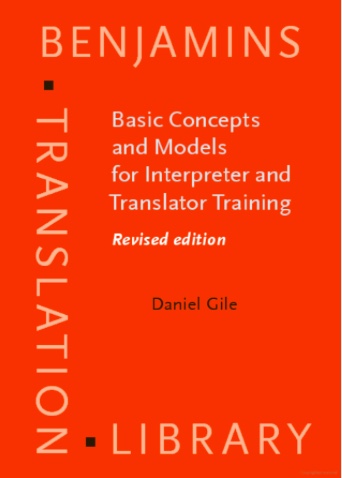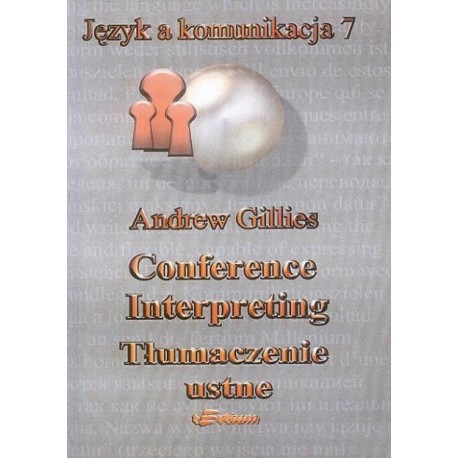Coping Tactics in Interpretation
Introduction
In spite of interpreters’ preparation strategies, problems do arise in interpreting situations (see Gile 1989) because of processing capacity limitations (as explained in chapter 7), errors in processing capacity management, and gaps in the interpreters’ Knowledge Base. Many of these problems can be said to be unavoidable, as shown by the fact that they are encountered regularly even by interpreters with a solid reputation and long professional experience. Interpretation has been referred to by some professionals as “crisis management,” and in the light of interpreters’ daily experience, these are apt words to describe an aspect of interpreting which is virtually unknown to the public at large.
Difficulties affect both comprehension and production, often through failure sequences as explained in chapter 7. When interpreters are aware of such problems, they tend to use a rather small set of tactics to limit their impact.
Coping tactics are a very fundamental practical skill in interpreting. Basically, they are taught within the framework of practical exercises. In most training programs, this is done by trial and correction, with trial on the student’s part and corrections from the instructor. Such corrections are generally normative; instructors sometimes refer to the communication impact of the tactics in order to explain their preferences, but are not necessarily aware of other factors which influence them.
This chapter attempts to provide instructors with a list of basic coping tactics for a general view of the issue. It also presents a conceptual framework which spells out the advantages and drawbacks of each tactic, and discusses a few rules which may help explain what makes interpreters prefer one tactic over the other beyond their individual merits.
Tactics in simultaneous interpretation
2.1 Comprehension tactics
The following are the main tactics used when comprehension problems arise, and when they threaten to arise under time-related or processing capacityrelated pressure.
a. Delaying the response
When a comprehension difficulty arises, interpreters may respond immediately with one of the other tactics presented below. However, they may also delay their response for a while (a fraction of a second to a few seconds), so as to have some time for thought while they receive more information from the source-language speech. After a while, they may have solved the problem entirely, or else they may decide to resort to another tactic.
Because of its very nature, the Delay tactic involves an accumulation of information in short-term memory, and is associated with the risk of losing speech segments in a failure sequence as outlined in chapter 7.
b. Reconstructing the segment with the help of the context
When interpreters have not properly heard or understood a technical term, name, number, or other type of speech segment, they can try to reconstruct it in their mind using their knowledge of the language, the subject, and, the situation (their extralinguistic knowledge).
The reconstruction process is an integral part of speech comprehension in everyday situations as well. It is defined as a tactic in the present context when it becomes a conscious endeavor, as opposed to an ordinary, subconscious process.
If successful, reconstruction can result in full recovery of the information. However, it may entail some waiting until more information is available and require considerable time and processing capacity. Like the Delay tactic presented above, it is associated with a high risk of saturation and individual deficits. Reconstruction from the context can therefore not be considered a high-priority tactic.
c. Using the boothmate’s help
In simultaneous interpretation, there are theoretically at least two interpreters in the booth at all times. One is active (producing a target-language speech), while the other is passive (listening, but not speaking). The passive colleague, who can devote full attention to listening, has a better chance of understanding difficult speech segments than the active interpreter, whose processing capacity is being shared by the three Efforts. Moreover, on the production side, the passive interpreter can consult a glossary or another document, which takes up much time and processing capacity, and then give the information to the active colleague, generally in writing. The presence of a passive interpreter in the booth is therefore a major asset to the active interpreter.
The active interpreter can ask for the passive colleague’s help with a glance or a movement of the head. In teams that work well, the passive interpreter will sense a hesitation in the active colleague’s speech and understand there is a problem. He or she can also anticipate problems and write down names, numbers, technical terms, etc., without even being asked for help. When the problem is terminological, the boothmate will generally indicate to the active interpreter the target-language term if possible, so that it can be used for reformulation. When the problem lies with a single word, name, or number, the passive boothmate can also write it down in the source language for the benefit of the active interpreter who did not hear it correctly. It is much more difficult, however, to explain an idea efficiently, because the active interpreter does not have time to read a long explanation.
This tactic is a very good one because it does not cost much in time and processing capacity, and pooling the knowledge and intelligence of two persons, one of whom does not have to divide attention between listening and other tasks, provides a better chance of finding the information than using the resources of only one person.
However, in order for the tactic to work, the passive interpreter must be not only physically present in the booth, but also available and willing to make the effort and help the active colleague. This situation does not always occur:
• Because of the intense effort involved in interpreting, interpreters strongly feel the need for rest. In teams composed of two members per target language, when conditions are difficult, interpreters tend to leave the booth as soon as they have finished their active duty and only return when they are on again, or else they may stay in the booth but shut themselves out and rest.
• In conferences in which papers are to be read, documents are often given to the interpreters at the very last moment, and presentations are allocated individually to each member of the team. In such a case, all interpreters are busy reading their paper or interpreting, and no help is available to the active interpreter from other team members.
• For psychological and sociological reasons, including the awareness of one’s weaknesses and some associated frustration, interpreters may feel vulnerable and not want other colleagues to sit with them and listen while they are working.
It is important for teachers to point out the practical value of cooperation between interpreters, as well as its importance in the framework of professional ethics aiming at offering clients better service. The practical aspects of such cooperation, involving in particular large and legible handwriting, should also be stressed.
d. Consulting documents in the booth When there is no passive colleague in the booth, interpreters can look for solutions in documents they have before them.
The efficiency of this tactic varies greatly: looking for a term in a commercial dictionary may require much time and processing capacity, but finding an important word in a document that was read and marked before the conference can be very fast. This is why it is important to pay attention to both the preparation of documents and their management in the booth. Instructors should show students how to make important names and terms stand out for quick reference, using highlighters or other means. Writing important technical terms and names on a sheet of paper in front of the interpreter (beside the glossary prepared for the conference) is another way of making them readily available. In particular, documents should be laid out in the booth, sorted, and marked in such a way as to minimize the time needed to access them and to recognize their identification numbers or titles, possibly with different stacks for each language, sorted by numerical sequence, type of document, etc.
2.2 Preventive tactics
The following tactics are used when time or processing capacity pressure is such that the interpreter believes a problem may arise or is about to occur. The idea is to limit the risks of failure.
a. Taking notes When the speech contains figures and names that interpreters feel they may forget and that they cannot reformulate right away for syntactic reasons, they may take them down in notes. While affording greater security as regards the items which are taken down, this tactic entails a high cost in time and processing capacity, which increases the risk of losing other items of information that come before or after those written down (this is an interference phenomenon, as explained in section 3). The risk is reduced significantly when it is the passive colleague who writes the information for the active colleague.
It is interesting to note that when translating in simultaneous from and into Japanese, some Japanese interpreters take down not only numbers and names, but also other information which Westerners generally do not write (in this case, it is often the passive interpreter who takes down the information for the active colleague). The reason given by them is that syntactic structures differ greatly between Japanese and other (mostly Western) languages, which leads to much waiting before the reformulation of any specific part of a sentence, hence a possible overload of short-term memory and an increased risk of losing information (see chapter 9).
b. Changing the Ear-Voice Span
By changing the Ear-Voice Span (EVS), that is the time lag between comprehension and reformulation, interpreters can control to a certain extent the processing capacity requirements for individual Efforts. By shortening the lag, they decrease short-term memory requirements, but deprive themselves of anticipation potential and run the risk of misunderstanding a sentence and driving themselves into target-language sentences which will be difficult to complete. By lagging further behind, interpreters increase comprehension potential, but may overload short-term memory.
Teachers sometimes advise students to try to lengthen or shorten their EVS in specific cases, but there does not exist a clear-cut, consistent theory or set of operational rules on the subject. It seems that EVS regulation is learned with experience; I believe that this is the single largest benefit derived from practice in simultaneous interpretation during initial training.
c. Segmentation
When faced with potential overload of memory, as with a source language and a target language that are syntactically very different, with embedded structures in the source language, or with unclear sentence structures, interpreters may choose to reformulate speech segments earlier than they would normally do, sometimes before they have a full picture of what the speaker wants to say. In such cases, they may resort to neutral sentence beginnings or segments in the target language that do not commit them one way or another. For instance, in a source-language sentence expressing a causal relationship such as:
Because of the complex character of equation (2) as shown above, compounded by the difficulty of finding a unique solution to equations (3) and (4) which correspond to a steady state system …
the interpreter can say in the target-language something like:
Equation (2) as shown above is complex. Equations (3) and (4) describe a steady system. It is difficult to find a unique solution to them.
While interpreting these segments, he or she will keep in mind the causal nature of the relationship, which will eventually be expressed by “Therefore ….” Segmentation can save short-term memory capacity requirements by unloading information from memory faster. On the other hand, the very formulation of several grammatically complete short sentences instead of one may involve higher processing capacity requirements in the Production Effort. Recommendations should be given on a case-by-case basis.
d. Changing the order of elements in an enumeration
Enumerations are high-density speech segments that impose a high load on short-term memory. One tactic often observed consists of reformulating the last elements first so as to free memory from the information, and then to move on to other elements. To my knowledge, no analysis has yet been performed as to why this should reduce Memory Effort load. One possible explanation is that by reformulating the last elements first, it is possible to pick them up before they have been processed in depth and integrated fully into the semantic network, thus saving processing capacity. This tactic may work best with names, which can be reproduced from echoic memory (memory of the sound), or with terms which are easily transcoded; it may not be very effective if such elements cannot be transcoded or reproduced phonetically and require more processing capacity anyway.
Gile includes reformulation tactics as part of coping tactics. They are detailed here



